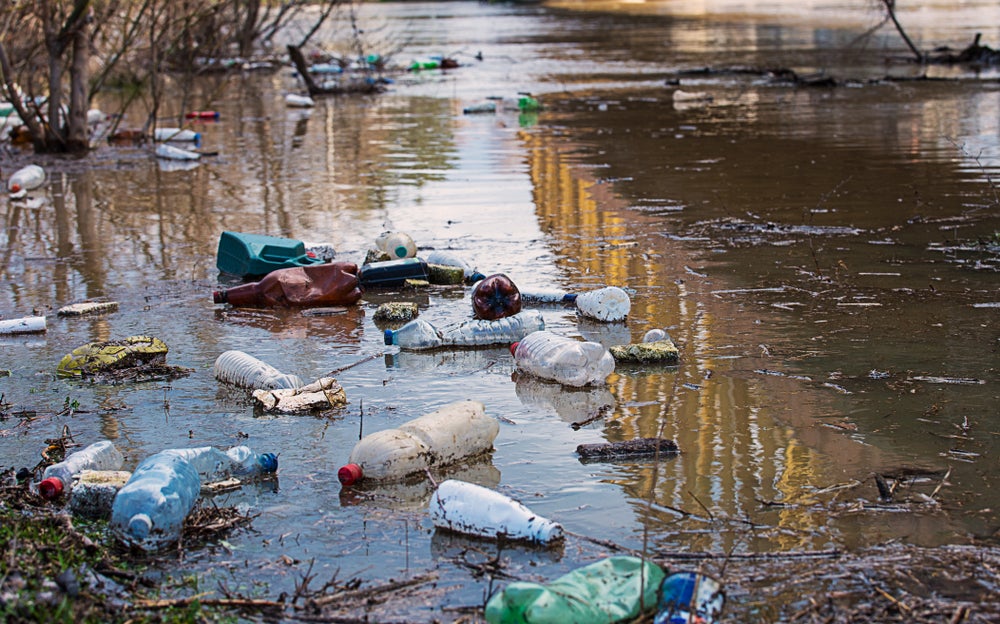Plastic, a relatively modern invention, has drastically revolutionised our way of life since the 1950s to the point where many people cannot imagine living without it.
However, this versatile material, used in almost every industry, is also wreaking serious harm on our planet.
The alarming reality of plastic waste
Every year, we produce around 400 million tonnes of plastic waste, with 40% being single-use, destined to linger in landfills for up to 400 years, releasing harmful chemicals into the environment as it does so. What’s even more troubling is that a staggering 72% of the plastic we make ends up in landfills or the environment. In fact, only 9% of all plastic ever produced globally has been recycled.
Plastic pollution poses a severe threat to the planet and human health. Plastic contamination has reached dangerous levels: the Ellen MacArthur Foundation has estimated that there will be more plastic (by weight) in the ocean than fish by 2050. Discarded plastic degrades into microplastic pieces, which can infiltrate fish and marine life and eventually make their way into our food chain. Shockingly, one in three fish caught for human consumption contains traces of plastic. Microplastics have permeated every corner of the earth, from the peaks of Mount Everest to the depths of the Mariana Trench. A 2022 study revealed that 80% of individuals tested had microplastics present in their bloodstreams, a disturbing finding considering the harm these particles can cause to human cells. Microplastics have even been detected in human breast milk, and a recent US study found microplastics in all 62 human placentas examined. In every facet of life, in every region of the planet, the presence of plastic waste is unavoidable.
The problem with recycling
We are often told that recycling plastic is the solution to combating plastic pollution. Yet, the reality is that recycling plastic is and always has been extremely difficult. The multitude of plastic types do not blend well together, requiring meticulous sorting before recycling can occur. Even then, plastic’s quality degrades with every recycling, which merely delays its inevitable disposal in landfills. Moreover, the cost of recycling plastic far exceeds that of producing it from fossil fuels, providing little financial incentive for companies to prioritise recycling plastics.
Efforts aimed at reducing plastic pollution can sometimes backfire. For instance, a video of a turtle with a plastic straw lodged in its nostril sparked enough outrage for companies such as Starbucks to pledge to phase out single-use plastic straws. However, one of the alternatives is a strawless lid, which uses more plastic than the original lid and plastic straw combined. While these lids may theoretically be recyclable, in practice a significant portion likely ends up in landfills, rendering the intended environmental benefits futile.

US Tariffs are shifting - will you react or anticipate?
Don’t let policy changes catch you off guard. Stay proactive with real-time data and expert analysis.
By GlobalDataThe history of recycling plastic
The plastic industry has always known how difficult recycling plastic is. In 1969, one industry insider even stated that the economics of plastic recycling were “virtually hopeless”. However, by the late 1980s, mounting public pressure and awareness surrounding plastic pollution forced the industry to address these concerns as plastics faced potential bans.
To prevent bans on plastics, the industry invested tens of millions of dollars in promoting recycling as a viable solution. Yet, it seems they were always aware that large-scale plastic recycling was unrealistic at best and, at worst, a blatant lie.
By advocating for recycling, plastic producers shifted the burden of environmental sustainability onto consumers, therefore absolving themselves of accountability for the plastic pollution crisis. This strategic move allowed them to blamelessly perpetuate the epidemic of plastic waste.
What’s next?
To tackle plastic pollution, we need to reduce the amount of plastic produced in the first place, rather than relying on recycling as an effective solution.
In March 2022, the UN Environmental Assembly deliberated on the global plastic crisis, and 175 nations voted to endorse a global treaty aimed at combating plastic pollution. This could potentially include measures such as the prohibition of single-use plastics. The fifth and final negotiation meeting will be hosted in Busan, South Korea, in late November. What’s decided will be crucial for the future of our health, our lives, and our planet.






